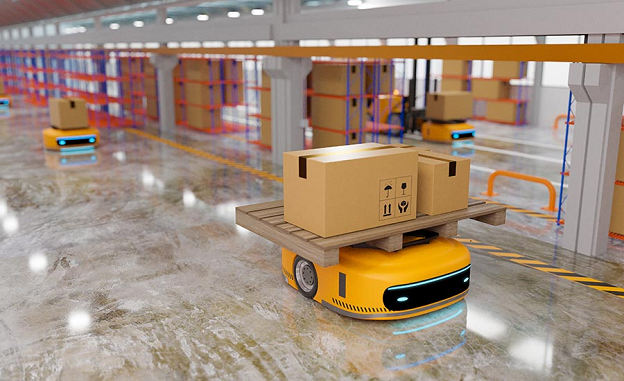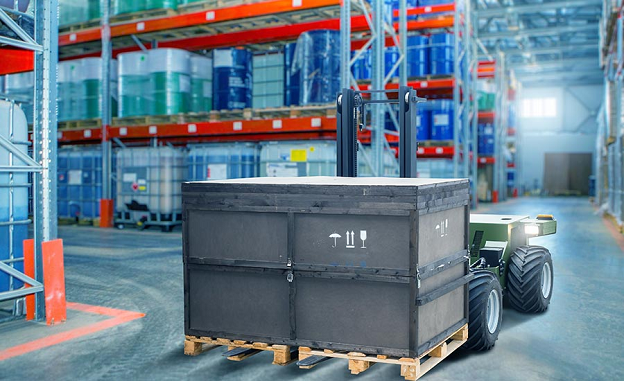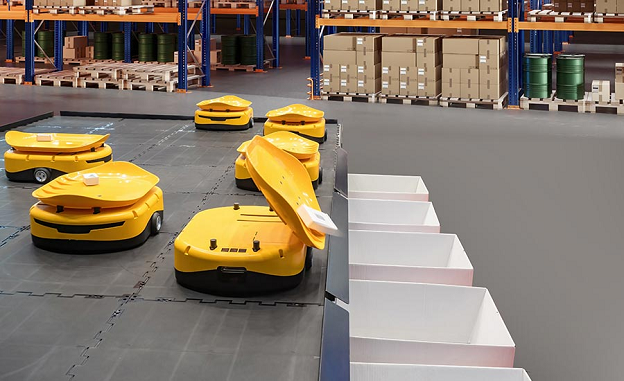
Automated guided vehicles (AGVs) are driverless machines that transport goods in warehouses and factories.
For warehouse operations facing labour shortages or limited space, AGVs can help optimise workflows, minimise manual labor, and boost overall efficiency.
Additionally, they can navigate narrow aisles, operate around the clock, and manage repetitive tasks, allowing your staff to tackle more complex duties, such as performing quality checks.
In this guide, we’ll share everything you need to know about automated guided vehicles (AGVs), including the types, their benefits, and Modula APAC’s vertical lift modules (VLMs) that seamlessly integrate with AMRs to boost productivity in your warehouse operations.
What Are Automated Guided Vehicles (AGVs)?
Automated guided vehicles are battery-powered robots that transport goods in a warehouse space.
They are considered the predecessors of autonomous mobile robots (AMRs) and use vision cameras, radio waves, magnets, and lasers to navigate a facility.
Automated Guided Vehicles (AGVs) vs. Autonomous Mobile Robots (AMRs)
Automated guided vehicles (AGVs) follow fixed routes guided by markers such as wires, magnetic strips, and laser paths.
Warehouse operators typically don’t need to manually operate AGVs. Instead, they set up routes, monitor systems, and manage workflows to ensure these vehicles operate effectively.
In contrast, autonomous mobile robots (AMRs) navigate the warehouse independently using artificial intelligence, machine learning, and dynamically generated maps.
Equipped with cameras and proximity sensors, AMRs calculate routes in real time so they can adjust to changing conditions and obstacles, such as cluttered pathways.
A warehouse operator can direct an AGV on where to go, what goods to pick up, and where to drop them off.
Leveraging fleet management software (FMS) is essential during this process, as central control systems assess requests for goods, such as incoming orders, and decide which vehicle to send for each load.
Types of Automated Guided Vehicles (AGVs)
Different types of automated guided vehicles are available on the market, including:
1.Automated Guided Carts
Automated guided carts (AGCs) are the simplest form of AGVs and are commonly used in sorting, storage, and cross-docking tasks.
AGCs can transport a wide range of materials, from small parts to full pallets.
2.Towing AGVs
Towing vehicles, also known as tugger automated guided vehicles, can haul multiple unpowered, cargo-bearing vehicles in a train-like sequence.
Often called driverless trains, these vehicles move on wheels and are typically used to transport heavy loads over long distances.
3.Forklift AGVs
Forklift automated guided vehicles, or fork vehicles, perform the same functions as human-operated forklifts, such as transporting pallets.
However, unlike a conventional forklift, they don’t require a human operator to function.
4.Unit Load Handlers
Unit load handlers are vehicles that transport individual items, such as pallets or totes, from point A to point B.
These machines facilitate in-process handling and distribution tasks, such as receiving, storing, and shipping.
5.Heavy Burden Carriers
Heavy burden carriers can transport the heaviest loads, such as castings, heavy coils, or plates.
These carriers may feature self-loading functions and offer various steering options, including standard, pivot, or omnidirectional.

How Do Automated Guided Vehicles (AGVs) Work?
Automated guided vehicles operate within industrial settings, utilising advanced navigation systems to move materials. Their navigation methods range from simple magnetic tapes to complex laser-guided or camera-based systems.
- Automated guided vehicles navigate facilities using systems like magnetic sensors, following tracks made of magnetic tape or wires embedded in the floor. These wires transmit signals that automated guided vehicles detect through sensors or antennas.
- For automated guided vehicles to move forward or backward, their wheels move at the same speed.
- Automated guided vehicles detect obstacles, adjust their routes to avoid collisions, and maintain safe operations using sensors and cameras. A wireless emitter dispatches signals in designated areas, and the AGV’s sensor picks up and echoes these signals.
- If the path is unobstructed, a “clear” signal permits the AGV to proceed. Vehicles equipped with “collision avoidance zone control” also emit a signal and wait for a response to detect any objects ahead.
- AGV software manages automated guided vehicles by coordinating tasks and routes, integrating with the facility’s management systems to receive and update task statuses.
- Automated guided vehicles communicate with a central control system via Wi-Fi or other wireless networks to receive directions and provide updates.
Speed Up Your Operations by Integrating AGVs With Vertical Lift Modules
Integrating AGVs with our automated solutions significantly enhances the order fulfillment process.
No matter the size of your operations, our systems optimise picking precision, workflow productivity, and employee safety.
One popular solution at Modula APAC is our VLMs. Our Vertical Lift Modules (VLMs) are fully automated, compact vertical storage systems that maximise space by vertically organising items and significantly reducing the warehouse footprint.
Facing an uptick in orders? Our VLMs support both batch and multi-order modes, boosting productivity without disrupting the order fulfillment flow.
These vertical systems ensure a vast inventory is readily accessible and securely stored, delivering items automatically to operators with a simple barcode scan or a tap on the intuitive Copilot controller.
You can also boost accuracy, efficiency, and overall productivity by combining your existing warehouse solutions with our picking and warehouse management system (WMS). Easy to implement, our picking solutions elevate accuracy and efficiently expedite throughput.




![ROI for Warehouse Robotics and WMS [Timeline & Formula]](https://www.modula.cn/wp-content/uploads/2025/06/图片2-1-500x383.png)
![What Is the Role of 3PL? [+ Order Fulfilment Process]](https://www.modula.cn/wp-content/uploads/2025/05/图片1-4-500x383.png)



